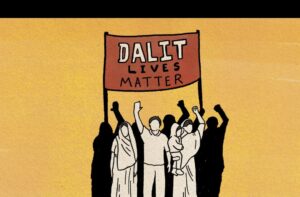Efforts to tackle long-standing racial and ethnic disparities in health care — energized by COVID-19’s devastating impacts on communities of color — are facing new threats.
Why it matters: Abortion bans, backlash to diversity efforts and the rise of artificial intelligence are adding new challenges to the work of reversing systemic inequities that have often resulted in worse care and outcomes for people of color.
The big picture: The factors that contributed to higher rates of COVID illness and death in communities of color were largely familiar problems — unequal access to care, overrepresentation in essential jobs with heightened risk of exposure to the virus, and inequities in the initial vaccine rollout.
- “We had a very stark, singular example of how health inequities were playing out in an area that was very top of mind for society,” said Colin Planalp, a senior research fellow at the University of Minnesota’s School of Public Health.
The pandemic became a watershed moment in how society addresses health care disparities, spawning a host of new efforts from the federal government, state officials and the health care system.
- Key goals were expanding health care coverage and access to care. There have also been concerted efforts to improve data collection in communities of color to better quantify problems and measure whether efforts were actually working.
Reality check: “The disparities we see come from decades of policies, beliefs and attitudes that are in many ways embedded into our systems,” said Samantha Artiga, director of the Racial Equity and Health Policy Program at KFF.
- “There’s been a surge in attention, but it’s going to take effort across sectors.”
Yes, but: Some of the progress is already in jeopardy from huge societal shifts since the country emerged from the public health emergency.
- Women of color are disproportionately affected by abortion restrictions enacted since the Supreme Court’s 2022 decision overturning Roe v. Wade.
- Black women are twice as likely to deal with serious complications and three times more likely to die during pregnancy than women of other races, and 70% of OB-GYNs say those inequities have only gotten worse since the Dobbs decision, per a KFF survey.
Last year’s Supreme Court decision overturning affirmative action in higher education and anti-DEI movements in schools, government and beyond are poised to exacerbate inequities if they interrupt efforts to hire people of color to lead agencies and hospitals, Artiga said.
- “Having a diverse health care workforce is key for addressing some of the issues we see.”
And the rapid growth of AI in health care — along with all of its baked-in biases— raises flags about whether minority patients are more likely to receive faulty diagnoses and treatment plans.
The bottom line: “The virus didn’t come to us with any prejudices,” said Planalp, the University of Minnesota researcher. “The disparities that we saw and we continue to see are a result of the social conditions of our country.”




